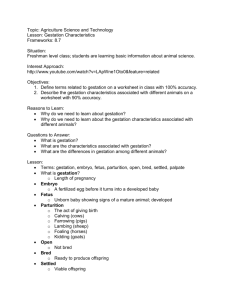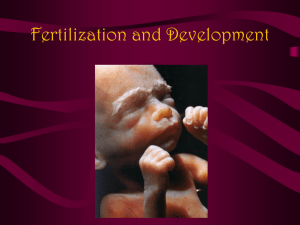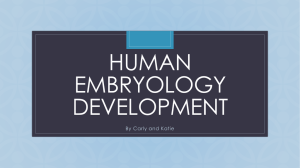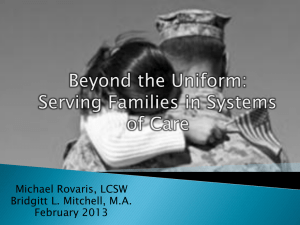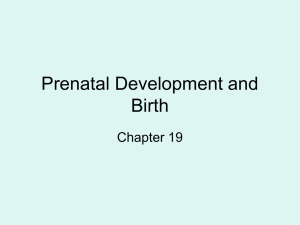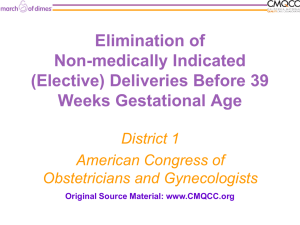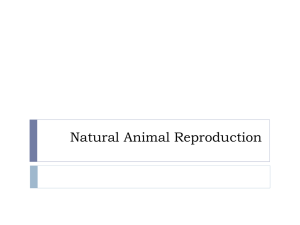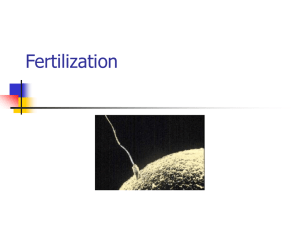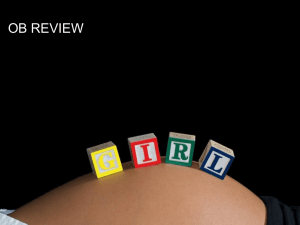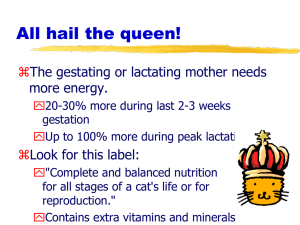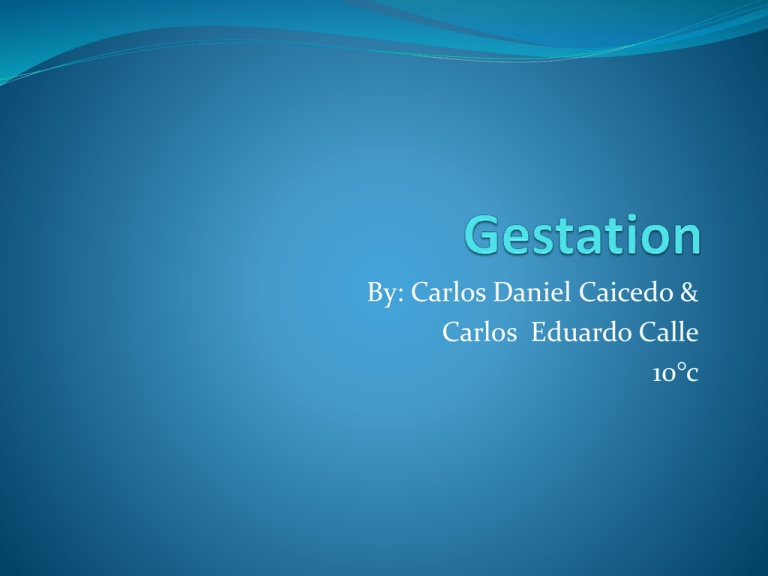
By: Carlos Daniel Caicedo &
Carlos Eduardo Calle
10°c
What is Gestation?
Gestation is when a female viviparous* animal carries
an embryo* or fetus.
The interval time of a gestation plus two weeks is
called gestation period*.
The length of time plus two weeks that the offspring
have spent developing in the uterus is
called gestational age*.
What is gestation period?
In mammals the gestation
period is the period in which
the fetus develops, this starts
with the fertilization and
ends on the birth.
Smaller species normally have
a shorter gestation period
than larger animals:
An example is the gestation
period of a cat it normally
takes 58–65 days while an
Elephant's gestation period
lasts 645 days.
In humans the gestation
period is normally of
nine months.
Factor such as gender
can affect the duration
of the gestation period,
for us humans a male
fetus tends to gestate
longer than female
fetuses and multiple
pregnancies, tend to
take a shorter time.
The ethnicity (race)
make the gestation
period longer or shorter.
Gestational age
Gestational age is the time measured from the first day
of the woman's last menstrual cycle to the date were
the baby is born, it is measured in weeks. A normal
pregnancy can range from 38 to 42 weeks.
Infants born before 37 weeks are considered
premature. Infants born after 42 weeks are considered
post mature.
You can determine the gestation age in two ways,
before or after the baby is born:
Before birth, growth is determined with ultrasound by
measuring the size of the head, and abdomen.
After the birth, it can be
determined by measuring
the babys head
circumference, the babys
height, condition of skin and
hair, reflexes, muscle tone,
posture, and vital signs.
Finding the gestational age
is really important because
with this doctors can gather
valuable information of
expected or potential
problems that the baby
could have.
Whats a zygote?
After a female egg is
fertilized, the resulting one
celled organism is called
zygote. Once the egg is
fertilized, the zygote begins a
two week period of rapid cell
division and becomes to be a
embryo.
The zygote divides with the
process of mitosis, in witch
each cell doubles by dividing
in two cells.
This two week period is
called the germinal period of
development.
A zygote is a single diploid cell(a
diploid cell is cell with two
chromosomes), created through
the merging of two haploid cells
(a cell that contains a complete
set of chromosomes).
The period of the zygote lasts for
about four days. Around the fifth
day, the mass of cells becomes
known as a blastocyst
(the blastocyst is a structure
formed in the
early embryogenesis of
mam
mals). The germinal period will
last for fourteen days, after this
the embryonic period begins.
Whats a embryo?
An embryo is an organism
in the early stages of
development which cannot
survive on its own.
The precise definition of
an embryo varies; in
humans, for example, a
fertilized egg may be
considered an embryo until
around the eighth week of
pregnancy, as
the embryo mature it starts
to turn into a recognizable
form to the point when
people start referring to it
as a fetus, especially in
humans.
The term “embryo” is
only used to refer
to eukaryote (or
muticellular
organisms) organisms.
The formation of
an embryo starts
at fertilization, when
eggs and sperm meet,
they form what is
known as a zygote.
After fertilization, the
zygote starts to divide,
when division begins
the zygote turns into
an embryo.
Multiple gestations
Occurs when two or more fetuses are conceived at the
same time in the same woman.
With multiple gestation, the fetuses are either
monozygotic* or dizygotic*.
There is a higher rate of occurrence with use of fertility
drugs or treatments, such as in vitro fertilization.
Monozygotic: during conception, the sperm fertilizes
one egg, which will later split into two or more
developing embryos.
Dizygotic multiples: occur when a woman’s body
releases several eggs, and those eggs are each fertilized
by different sperm. The resulting fetuses are fraternal
siblings, and are not identical.
Social factors which affect
gestation
Medications and drugs can also impact embryonic growth.
This 8,000 babies were born with birth defects because
their mothers had taken the tranquilizer Thalidomide.
Some races are more prone to teen pregnancy, data taken
by “The Guttmacher Institute ” show that:
blacks typically have 126 teen girls become pregnant in every
1,000 girls.
Hispanic have 127 teen girls become pregnant in every 1,000
girls.
Non-Hispanic whites average 44 pregnancies per 1,000 girls.
Today researches show that a girl who lives in poverty
is more likely to become pregnant because of
teachings and attitudes on sex, as well as access to
contraception.
Enviromental factors which affect
gestation
Researchers found that the air quality of the area was worse
during the winter months, and the infants conceived during
those winter months saw the most intrauterine growth
retardation.
Smoking during gestation cause aproximately 20 to 30 percent of
low-birth weight babies.
Reaserches states that up to 14 percent of preterm deliveries are
due to smoking.
FAQ
What is the difference between a pregnancy and
gestation?
Pregnancy is the fertilization and development of the
offspring in womans uterus, while gestation is the
carrying of the embryo .
Why do all animals have a different gestation period?
For most species, the amount a fetus grows before birth
determines the length of the gestation period. Smaller
species normally have a shorter gestation period than
larger animals.
Bibliography
http://www.wisegeek.com/what-is-a-multiple
gestation.htm
http://www.livestrong.com/article/233087environmental-factors-affecting-fetusdevelopment/#ixzz1mUNd5K86
http://multiples.about.com/od/twinpregnancyfaq/f/t
winpregnancy_f.htm
http://www.answers.com/topic/embryo
http://www.answers.com/topic/embryo

